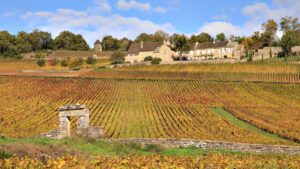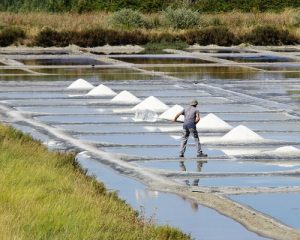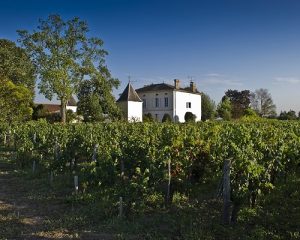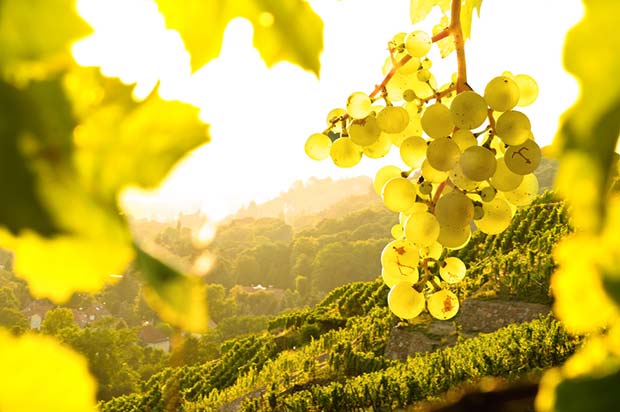
Following the first part of the article where we looked at the various climatic factors which can influence the quality of a vintage, we will now see that light, rain and temperature levels also need to be exactly right at certain key stages in the vine’s development. Getting all the right climatic conditions to make a great wine is quite a tall order!
As we saw in the first part of this article, vines need heat, light and water in the right proportions. For example, optimum climatic conditions are especially important at flowering or harvesting time.
Climate and key moments
As we’ve already seen, for a good vintage, the vines need plenty of light, a reasonable amount of heat, and also a fairly substantial quantity of water. A perfect climatic balance of this kind will almost automatically translate into a perfect balance between sugar, acidity, mature skins and seeds, and aromatic potential in the grapes. A fairly cold winter, a spring with alternating periods of sunshine and occasional rain, a fairly hot and dry summer with the odd shower to ward off water stress, and rain-free harvesting… conditions like these will virtually guarantee a good year. However, such an idyllic succession of favourable weather spells may unfortunately be less common than years where something goes wrong… for there are many potential risky points in the life of the vine.
Flowering
The first of these is flowering, which generally occurs in June. This period is when the vines are pollinated, and is therefore a necessary condition for the subsequent appearance of the grapes. If there is rain or (especially in the South of France) strong wind during flowering, the pollen will be unable to achieve its task of pollinating the flowers. When this happens, it is known as coulure and there will be partial bunches of grapes growing on the vines. When this phenomenon is widespread, it can have a significant impact on the size of the coming harvest. Certain varieties (for example, Grenache) are more sensitive to coulure than others.
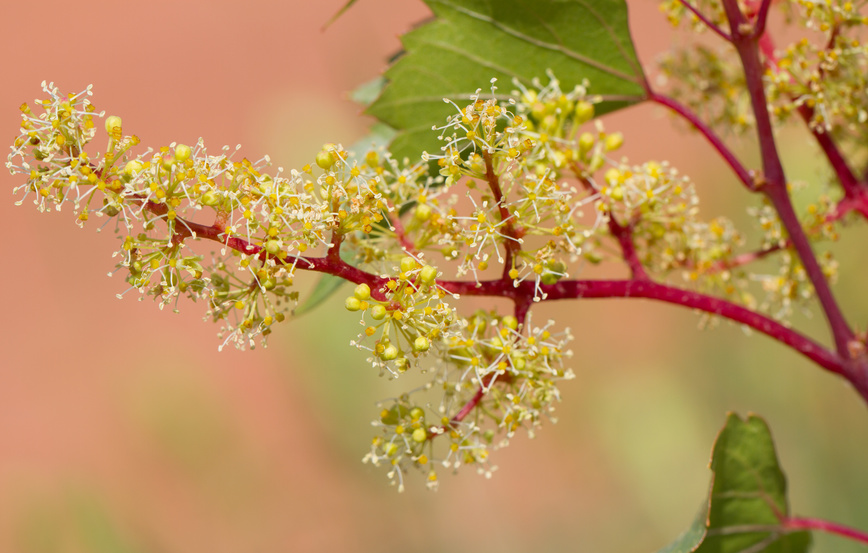
Summer
Too much rain and damp during the May-July period can lead to the appearance of diseases such as mildew or oidium, which are caused by the growth of tiny fungi. If not carefully controlled, these two diseases can have serious consequences for both grape quantity and quality.
Contrary to the received wisdom, too much summer heat and sunshine is no good at all for the vines and the quality of the vintage. Such extremes can lead to water stress – as we have already seen – which can impede grape maturity, as the vine concentrates primarily on its own survival under difficult conditions, “giving up” on its fruit. These excesses can also result in “candied” grapes, excessively lowering their acidity. Hence the preponderance of heavy wines with dry tannins and unusual prune aromas following a year of heatwaves.
Harvest
Excessive rain just before or during harvesting can ruin a hitherto promising vintage. Heavy rainfall within a few days of harvesting dilutes the juices and swells the berries, causing them to burst, which then creates patches of rot. Strong rain during the harvest – a time when it can still be very hot – can also cause “galloping” rot among the vines in such sub-tropical conditions.
Microclimates
A number of local, microclimate-like considerations can play an important role in the quality of a vintage. For example, a windy spell after a patch of rain will dry the vines out quickly and thus (depending on the exact period) eliminate all risk of disease and rot. This is, for example, the case in the southern Rhône Valley and (to a somewhat lesser extent) in Provence, particularly in Bandol.
Diurnal range
Another very important aspect is a wide day/night temperature range, which plays a very beneficial role in the grapes’ progressive maturity and “depth”. Vines located at a relatively high altitude or near the sea often benefit from such temperature variations. In some years, winds and temperature variations of this kind can have a positive impact, either saving a difficult year or nudging a promising year towards perfection.
Exposure
Lastly, we should mention the importance of another aspect of the terroir – the vine’s exposure. In a year with little sunshine, a southern exposure will attenuate the “vintage effect”, or conversely may improve it in a very hot, sunny year. And the reverse is true in the case of a vine with northern exposure.
If you live in a wine region, your own observations will give you a good idea of what sort of year it will be for your local appellations. But if you live in the Paris area, Northern France or elsewhere in the world, you’ll just have to trust any friends who live in your preferred vineyard areas, trustworthy growers… or reports from iDealwine. 😉

